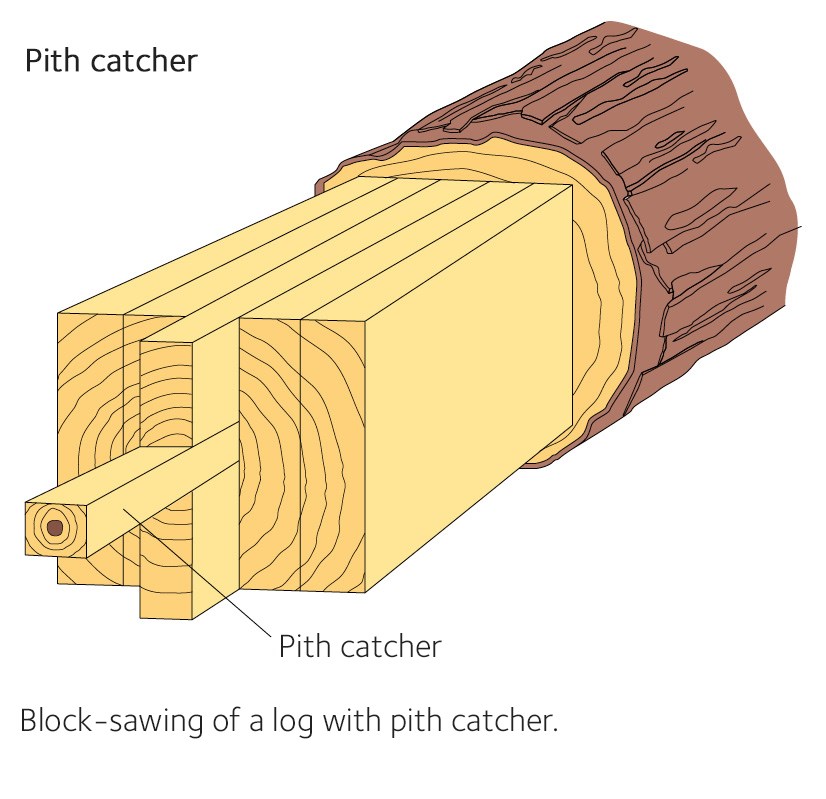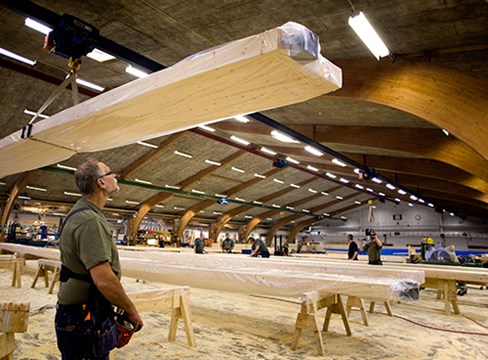Wood for the joinery industry
The joinery industry uses wood for various purposes, including windows, doors, stairs and various mouldings. Pine is usually used, because it is easy to work and creates a good surface appearance. Due to the heartwood’s natural durability it has good qualities when exposed to weather above ground.
Wood for the joinery industry is commonly sawn into thicknesses of 50, 63 and 75 mm. The width may range from 100–200 mm. Wood for windows is taken from the main yield, in order to obtain a high proportion of heartwood. Sometimes, the area around the pith is sawn away to give the products better dimensional stability. This is known as sawing with a pith catcher.
The original dimensions can be reduced through resawing or splitting. They can also be increased by gluing together smaller dimensions to create larger ones.
This bonding technique is also used to ensure minimum splitting in bulky dimensions. Bonding wood together can also limit changes in shape such as bending, warping and so on. This is important for the function of windows and doors, which must provide a consistent performance particularly with regard to good air seals and a good fit.
The wood for bonded products is usually taken from sawn timber of narrow dimensions. To achieve knot-free wood for internal window frames, for example, 25 mm knot-free sideboards may be used.
The raw material commonly supplied to the joinery industry is grade G4-1 or better, under grading in line with SS-EN 1611-1. Wood with only sound knots is desirable, but wood with black knots may be accepted in certain cases. Where wood has knots that are not acceptable in the finished product, such as loose knots, these are drilled out and repaired with a wooden plug. Knots may also be removed through cutting and then finger-jointing.


 One Tonne Life, Hässelby, nominated for the Swedish Timber Prize 2012. Photo Åke E:son Lindman.
One Tonne Life, Hässelby, nominated for the Swedish Timber Prize 2012. Photo Åke E:son Lindman.

Tomtebo forest sauna, Gävle, winner of the Swedish Timber Prize 2012. Photo Åke E:son Lindman.


